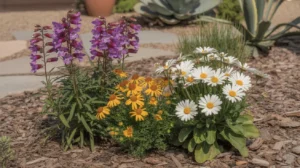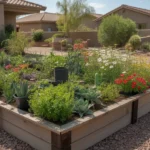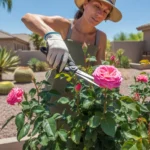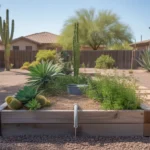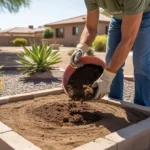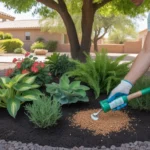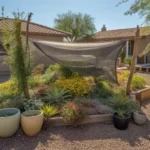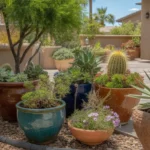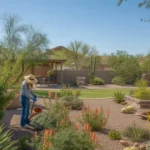As spring arrives in the Southeast Valley, it’s the perfect time to breathe new life into your flower beds. But before you dive in, be aware of some common pitfalls that can sabotage your efforts. With a little know-how and some expert tips, you can avoid these spring flower bed mistakes in the Southeast Valley and enjoy a vibrant, thriving garden all season long.
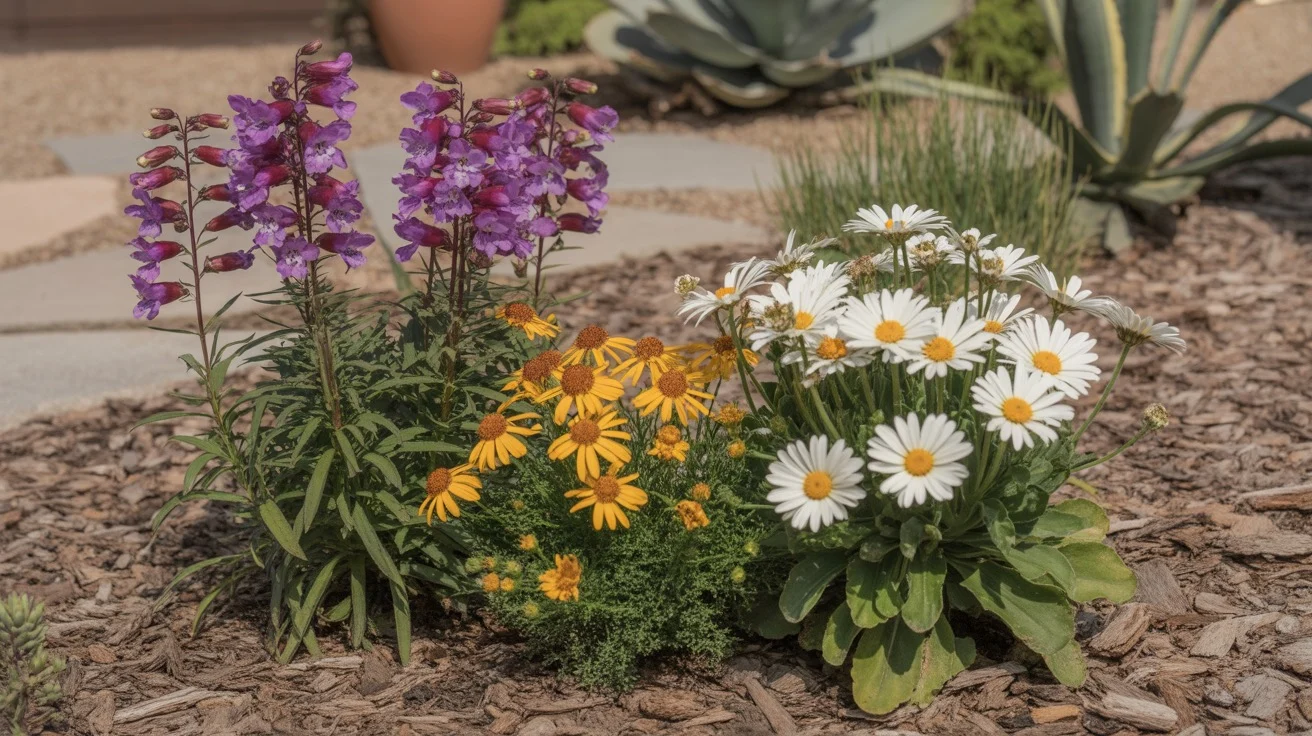
Planting Too Early
One of the biggest temptations for eager Southeast Valley gardeners is to start planting too early in the spring. While the days may be warming up, nighttime temperatures can still dip dangerously low for tender young plants. As a general rule, wait until after the last average frost date for your area before planting most flowers.
In the Southeast Valley, this typically falls around mid-February to early March. However, it’s always a good idea to keep an eye on the forecast and be prepared to protect your plants if a late cold snap threatens. Covering them with frost cloth or bringing potted plants indoors can help them weather a chilly night.
Choosing the Wrong Plants
Not all flowers are suited to the unique challenges of the desert climate. Many popular varieties that thrive in other parts of the country will struggle in the intense heat and dry conditions of the Southeast Valley. To set your flower beds up for success, choose plants that are well-adapted to the local environment.
Some top picks for spring color include:
- Penstemons
- Gaillardia (blanket flower)
- Angelita daisy
- Desert marigold
- Globe mallow
These tough, low-maintenance plants can handle the heat and provide a splash of color from spring through fall. As an added bonus, they’re also great choices for budget-friendly backyard makeovers in Gilbert and beyond.
Skimping on Soil Prep
In the excitement of picking out pretty plants, it’s easy to overlook the importance of proper soil preparation. But without a healthy foundation, even the most promising flower bed will struggle. Southeast Valley soils tend to be heavy, alkaline, and low in organic matter, which can be challenging for many plants.
Before planting, take the time to amend your soil with compost, aged manure, or other organic matter. This will improve drainage, boost fertility, and create a more hospitable environment for your flowers. If you’re unsure about your soil quality, consider having it tested through your local cooperative extension office for personalized recommendations.
Overwatering or Underwatering
Finding the right balance of moisture is critical for flower bed success, especially in the arid Southeast Valley climate. Many newcomers make the mistake of either drowning their plants with too much water or letting them wilt from thirst. Both extremes can be detrimental to plant health.
As a general guideline, most established plants need about 1 inch of water per week, either from rainfall or irrigation. However, this can vary depending on factors like plant type, soil conditions, and weather. Get to know your plants’ individual needs and monitor the soil moisture regularly. Water deeply and less frequently to encourage strong, deep root growth.
Ignoring Mulch
Mulch is a gardener’s secret weapon, but it often gets overlooked in flower bed preparation. A 2-3 inch layer of organic mulch, such as shredded bark or straw, offers a host of benefits. It helps retain soil moisture, regulate soil temperature, suppress weeds, and add nutrients to the soil as it breaks down over time.
Apply a fresh layer of mulch around your plants each spring, taking care not to pile it up against the stems or crowns. This simple step can dramatically improve the health and appearance of your flower beds while saving you time and effort in maintenance.
Forgetting to Deadhead
Deadheading, or removing spent blooms, is a small task that can make a big difference in the vibrancy and longevity of your flower beds. Many plants will continue to produce new flowers if the old ones are consistently removed. This keeps the plant looking tidy and channels its energy into fresh growth instead of seed production.
Make a habit of deadheading your flowers every few days as you stroll through the garden. It’s a relaxing, meditative practice that can be very rewarding. As you snip away the faded blooms, you’re encouraging your plants to keep putting on a colorful show all season long.
Neglecting to Plan for Summer
Spring may be the star of the show when it comes to flower beds, but don’t forget to plan ahead for the hot summer months. Many spring-blooming annuals will fade as the temperatures climb, leaving gaps in your garden. Have a succession plan in mind to keep the color going strong.
Consider adding heat-loving annuals like zinnia, vinca, and celosia as the weather warms up. Or, plant desert-adapted perennials that bloom through late May and beyond, such as yellow bells, desert willow, or red bird of paradise. With a little forethought, you can enjoy a seamless transition of color from spring to summer.
Planting in the Wrong Spot
Before you tuck your new plants into the ground, take a moment to assess the growing conditions in your flower beds. Is the area sunny or shady? Is the soil dry or consistently moist? Choosing plants that are well-matched to the site conditions is essential for their long-term health and success.
Pay attention to each plant’s light, water, and soil requirements and group them with compatible companions. Don’t try to force sun-loving plants to grow in the shade, or moisture-loving plants to tough it out in dry soil. By working with your site instead of against it, you’ll create a flower bed that thrives with less effort from you.
With these tips in mind, you’re well on your way to creating stunning spring flower beds in the Southeast Valley while sidestepping some common pitfalls. Remember, gardening is a journey of trial and error. Embrace the process, learn from your mistakes, and enjoy the colorful rewards of your efforts.

